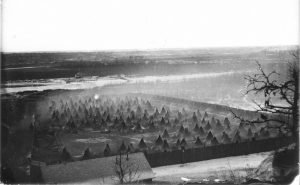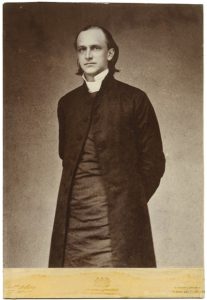On March 27th, Doğukan Günaydin, a master’s student at the Carlson School of Business, was detained by Immigration and Customs Enforcement (ICE). While Doğukan’s detention is the result of a vague tightening of immigration enforcement, where his immigration status will ultimately be determined, the Fort Snelling Immigration Court, has been the epicenter of contentious deportations in Minnesota for more than a century and a half.
Much of Doğukan’s arrest by ICE has been shrouded in secrecy; his name and even the rationale behind his arrest weren’t released until several days into his detainment. On April 8th, Doğukan finally appeared before a judge, appearing from the Sherbourne County Jail, one of five Minnesota counties to sign new agreements with ICE to perform certain functions related to immigration enforcement. Media outlets have suggested that Doğukan will appear before an immigration court on Friday, April 11th.
This means Doğukan’s hearing will be at the Fort Snelling Immigration Court. The court is one of sixty such courts spread throughout the United States that fall under the Executive Office for Immigration Review, a Department of Justice body. This body is responsible for the process of removal of immigrants, the enforcement of these decisions, and any subsequent appeals. In Minnesota, Fort Snelling is forever connected with the detainment of nearly 1,600 Dakota, almost all of whom were women, children, or elderly, through the winter of 1862-63 before their ultimate forced deportation west from Minnesota to reservations in Dakota Territory (and continued separation from Dakota men). The detainment of Dakota, along with the mass execution of Dakota men in the aftermath of the 1862 war, has been described by many as genocide, including the Minneapolis and St. Paul city councils.

from the MNHS Archives
The Fort Snelling Immigration Court is in the Bishop Henry Whipple Federal Building. Bishop Whipple was an Episcopal Bishop in Minnesota during the 1862 US-Dakota War. In response to the forced removal and the condemnation of 303 Dakota men to death, Bishop Whipple made appeals for clemency to President Lincoln. While Lincoln was ultimately persuaded to pardon all but 38 Dakota men (plus an additional two who were executed at Fort Snelling in 1863), Whipple’s attempts to save the Dakota in Minnesota ultimately came to nothing when Congress abrogated its treaties with the Dakota, and banned Dakota settlement in the state.

from the MNHS Collections
The events unfolding today have connections to events in the past that need to be understood. There’s no shortage of irony that a hearing to decide the immigration status of a University of Minnesota student will be determined in a court named for a site that was instrumental in deporting hundreds of innocent people.
Joe Eggers is the Interim Director of the Center for Holocaust and Genocide Studies.

Comments